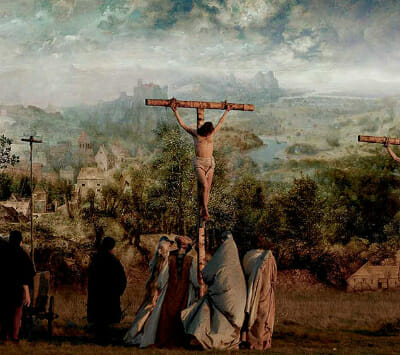The Mill and the Cross review

Art reclaiming and responding to tragedy is the central theme of Lech Majewski’s unearthly feature The Mill and the Cross, one that seems particularly appropriate right after the 10th anniversary of the September 11 attack on the World Trade Center. It’s hard not to wonder whether we as a country have come to grips with what occurred yet, and some such as the New York Times; feel like we still lack an adequate artistic response to the event. Majewski isn’t concerned with those events but in ones that occurred centuries ago—exploring how a person can find meaning in the worst sort of tragedy and inspire others with a work of incredible beauty in the face of the utmost horrors the world can offer.
-

-

-

-

-

-

-

-

-

-

-

-

-

-

-

-

-

-

-

-

-

-

-

-

-

-

-

-

-

-

-

-

-

-

-

-

-

-

-

-








































